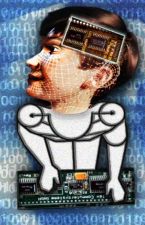 The new data from the Science and Technology in Society Monitor on “Italians, science and digital technologies”, published in the seventh edition of the Observa Science in Society Facts and Figures (Il Mulino publishing house).
The new data from the Science and Technology in Society Monitor on “Italians, science and digital technologies”, published in the seventh edition of the Observa Science in Society Facts and Figures (Il Mulino publishing house).
The impact of digital technologies is judged very positively by Italians, especially the youngsters. However, some worries still remain, and a large number of citizens is completely excluded from these technologies.
These are just a few among several data contained in the 7th edition of the 2011 Science in Society Facts and Figures.
Italians express a very positive judgment of the impact of digital technologies: they particularly emphasize the benefits of mobile telephones (eight Italians out of ten) and Internet (three out of four). Familiarity with these technologies and optimism for their benefits are very high among youngsters, although their relationship with technology is mostly for leisure and entertainment.
However, four Italians out of ten (39,1%) can be characterized as technoexcluded: they own no technological device except the mobile phone; they need help to learn to use a new technological object; they never or very rarely surf the net; most of them are concerned about the possible negative consequences of these technologies and often express opinions bordering on technophobia. On the other hand, one Italian out of four (26,6%) can be characterized as professional technophile: owning and using a number of digital technologies, especially for business.
So, which technological devices Italians always carry with them? In addition to the now ever-present mobile phone (nine Italians out of ten always have it at hand), USB keys (three out of ten) and Mp3 player (one out of five) are present in pockets and bags. Instead, laptops are rarely part of the technological equipment one carries around every day: although they are widespread, little more than one Italian out of ten keep their laptop always with them.
Significant concerns arise in connection with themes like privacy and responsibility. More than one Italian out of four, for example, think that responsibility for ‘inappropriate’ contents (e.g. offensive or privacy sensitive) should be ascribed to the website hosting them or making them available; the number of subjects ascribing responsibility to those who upload inappropriate contents is even higher. Very few Italians (less than 10%) place responsibility at the level of the user (who views or downloads contents). According to the editors of the book, these results show that the logic of traditional media and the concept of ‘passive’ user still prevail among Italians. “What emerges is a common difficulty in understanding how digital technologies have radically redefined boundaries between ‘public’ and ‘private’ in our daily life. So, on one hand, the easiness of using these new tools entice wide audiences; on the other hand, a large part of Italian society seems to still have to perfect the cultural tools to manage technological implications.”
The Science and Technology in Society Monitor conducts a CATI-based survey on a sample of 985 subjects, stratified by gender, age, and geographical area of residence, representative of the Italian population aged over 15.
The 2011 Science in Society Facts and Figures (edited by M. Bucchi and G. Pellegrini), now in its seventh edition, provides, in a brief and accessible format, key data and information to understand the state and transformation of research and innovation of contemporary societies. The Science in Society Facts and Figures benefits from the support of Compagnia di San Paolo and is published by Il Mulino publishing house.
Observa Science in Society is a non-profit, independent, legally recognized research center promoting the study and discussion of the interaction among science, technology and society, with the aim of stimulating dialogue among researchers, policy makers and citizens.







